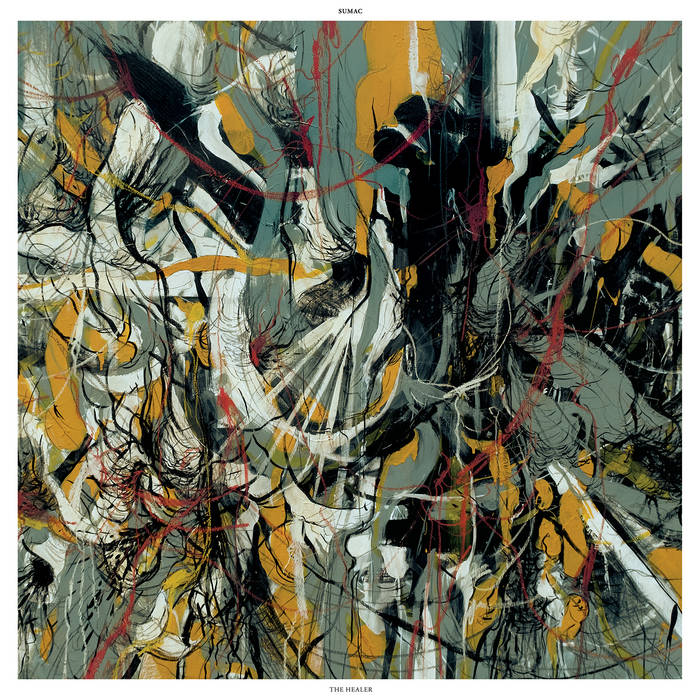
Sumac‘s venture into improvisation isn’t for everyone. The progressive sludge unit has become increasingly inscrutable with each album and collaboration they’ve made, opting to exist inside of their own sound rather than forcing it into a shape. As little as this has impressed me over the years, I’ve watched their evolution with hope and suspected that they were on the cusp of grasping some kind of mastery over their now almost decade long experimentation. The Healer is the moment it does come together. This new album is at once a throwback to what worked on 2016’s What One Becomes and a mutation into semi-loose improvisation. The 25 minute long “World of Light” starts things off revving up the atmosphere with a drone-like pace building for more than 10 minutes. Here already, you should know if this is something for you or not. The song transitions into surprisingly emotional doom metal for its middle and then back to improvisation with sampled sounds for its final third. Elsewhere, you’ll find some floating Pink Floyd-like atmosphere smashing into crawling sludge metal, intense marches with stuttering drums dragging things along. All of the band members have their moments to shine: Brian Cook‘s bass rumbles intently along in “Yellow Dawn”, Aaron Turner‘s howls and screeching guitar solos are caustic, and Nick Yacyshyn‘s drums regularly steal the show with powerfully precise hits and their disorienting stuttering. The Healer has a bubbling quality, where it constantly feels like it can erupt at any moment, and it does. “Yellow Dawn” and “New Rites”, the two shorter (12 minutes) tracks in the middle are more structured than usual for this era of the band. They are a throwback to the long buildups to sludge groove that made What One Becomes a good album. Sumac finally have got their improvisational side under control enough that they transition between structure and the free-form effortlessly. This raises The Healer to be more successful than any of their previous attempts at this style.
Of course, not everything they do on this album works. The 50 minutes that the bookending tracks take up have moments where shaving off a few repetitions would have made for a much leaner and meaner experience. “The Stone’s Turn” is the most guilty of this, where some of the aimlessness of previous attempts to put improvisation to tape rears its ugly head. The randomness of the chords stray from the simmering and erupting nature of the tracks that went before, making the album stumble over the finish line. With music like this, that is supposed to drown you in an atmosphere, it can be hard to describe the minute to minute details as that is somewhat missing the point. But what makes this album a success over Sumac’s other tries is in how most moments have clearly executed ideas, be it the revving drone or the marching sludge. The fact that The Healer catches my attention constantly when I have it on in the background shows that the album is crafted with intent and feeling, improvised or not. The only missing piece left is editing, to make something truly special. After eight years of collaboration with Keiji Haino and several failed attempts, it feels like I’m finally getting what this era of Sumac is about. As I’ve gone back and forth on how I feel about this album, the constant feeling has been that it is good. Time will tell how the album measures up with repeated spins across the year, but with this highly individual music the question is always how this particular set of free-form sounds hit you. The Healer has recovered my faith in Sumac, if only a little.
